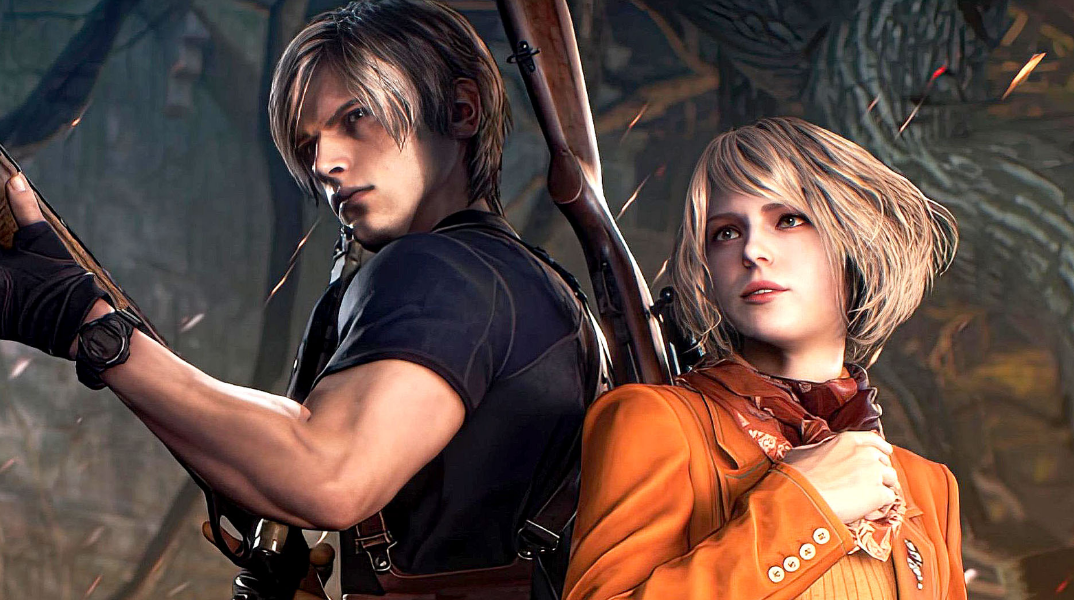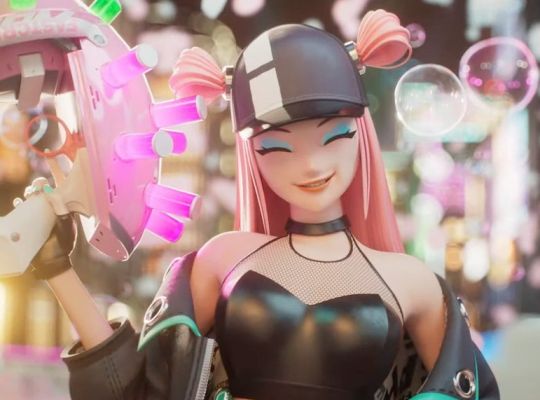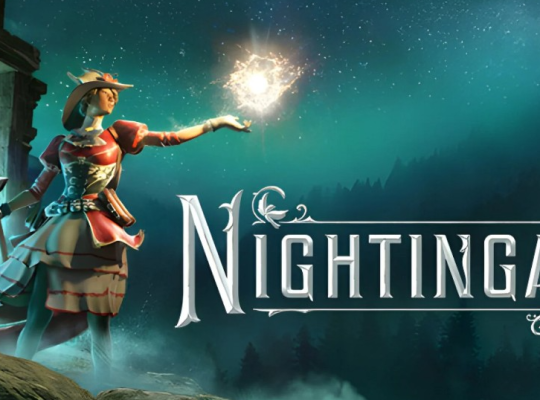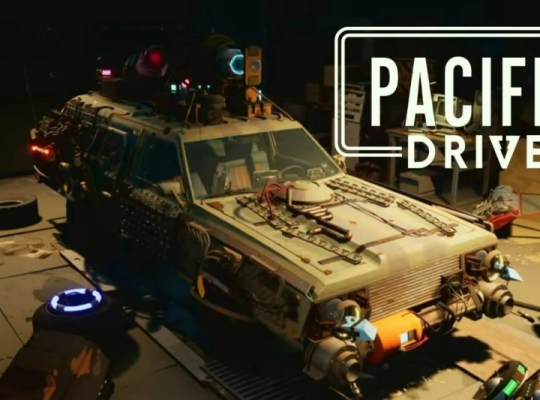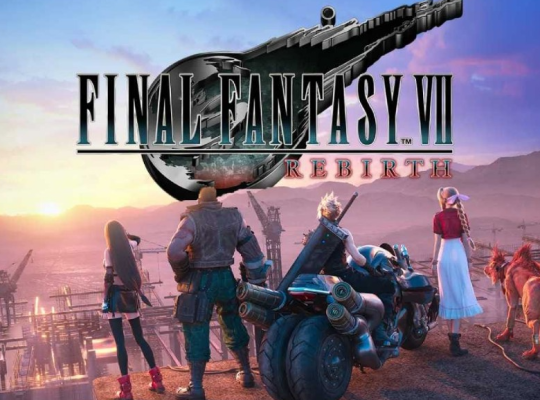Introduction to Resident Evil 4
Resident Evil 4, a game etched in the annals of gaming history, demands no preamble, yet my compulsion for exhaustive explanations propels me to embark on an introduction. The game, a cornerstone in the Resident Evil franchise, underwent a transformative shift from traditional survival horror to a more action-oriented sequel, leaving an indelible mark on the gaming landscape.
Resident Evil 4: Genre Evolution and Initial Reception
Upon its initial release, Resident Evil 4 emerged as a groundbreaking revelation within the Resident Evil series. The radical departure from traditional survival horror to a more action-oriented sequel raised eyebrows. The genre shift, initially jarring, has since become a cornerstone of the game’s legacy. The exceptional quality of Resident Evil 4 mitigated any concerns, with its expansive array of weapons and intense shooting combat against remarkably responsive enemies garnering well-deserved praise. The innovation of enemies reacting to specific limb shots added a layer of realism that was revolutionary at the time.
Resident Evil 4 Remake: A Bold Reimagination
Fast forward to the present, and we find ourselves immersed in the Resident Evil 4 remake—an ambitious project that transcends the boundaries of the original 2005 survival horror masterpiece. This remake follows in the footsteps of Capcom’s prior Resident Evil refreshes, such as the standalone Resident Evil 1 remake, the outstanding Resident Evil 2 remaster, and the commendable albeit slightly shorter remaster of Resident Evil 3.
Fan Expectations and Cap com’s Resolute Choice
The gaming community, fueled by nostalgia, may have yearned for a remake of Resident Evil: Code Veronica. However, the undeniable allure of Resident Evil 4 prompted Capcom to heed the siren’s call once again. Despite the game’s numerous re-releases, HD ports, and even a venture into virtual reality, the prospect of yet another remake left many, including me, feeling apprehensive. The question lingered: Did we truly need a remake of a game already deemed great, and could it possibly surpass the original?
As anxieties loomed, Capcom pressed forward, delivering a remake that defied expectations. The Resident Evil 4 remake, against initial reservations, emerged not only as a worthy successor but as a game that surpasses the brilliance of the original. The developers, in their wisdom, navigated the delicate balance of modernization and preservation, transforming a beloved classic into a contemporary masterpiece.
Unique Challenges in Remaking Resident Evil 4
Distinct from Capcom’s earlier projects, the remake of Resident Evil 4 encountered unique challenges. Unlike its predecessors, Resident Evil 4 discarded the slow horror, tank controls, and static camera angles. The introduction of an over-the-shoulder camera, now iconic and often imitated, marked a pivotal shift towards action and shooting dynamics. The scope for modernization, therefore, was narrower, with fewer obvious avenues for improvement.
Elevating Gameplay Mechanics and Visual Splendor
A critical facet of the remake’s success lies in the evolution of gameplay mechanics. The transition from traditional fixed camera angles to a dynamic over-the-shoulder perspective enhances immersion, providing a contemporary experience while retaining the essence of the original. Graphically, the remake is a visual spectacle, meticulously reimagining every detail from pixelated landscapes to high-fidelity environments, intensifying the eerie atmosphere that defined the 2005 classic.

Buddy Drama: Combat Dynamics and Crowd Control
The Resident Evil 4 Remake’s standout feature lies in its evolution of combat dynamics. While the original introduced the human-seeming ganados and their swarming tactics, the remake takes this concept to new heights. Enemies are now tougher, and more persistent, requiring players to adapt their strategies. The heart of the game remains crowd control, forcing players to navigate through seemingly unbeatable mobs, a relentless sea of bodies and tentacles.
The exhilarating combat experience is enhanced by subtle alterations to Leon’s toolkit. The core combat mechanic revolves around location damage, necessitating strategic shots to the legs or head, followed by well-timed melee attacks. A notable addition is the knife parry, introducing chaos and intensity to encounters. The reticule wavering, a seemingly minor detail, adds a layer of realism, requiring players to exhibit ice-cold nerves for precise aiming in the face of imminent danger.
As we navigate the maelstrom of battles, the essence of Resident Evil is captured in these moments. The remake successfully retains the atmospheric tension that made the original memorable, from the iconic “Un forastero!” shout to the relentless pursuit of survival.
Cover Version: Timidity in Remake’s Approach
While the combat shines, the remake takes bold steps in altering elements from the original. Capcom has removed Quick Time Events (QTE), a decision met with mixed reactions. The absence of certain dramatic and perilous sequences, integral to the original’s charm, raises questions about the remake’s ability to deliver the full Resident Evil 4 experience.
This departure becomes more pronounced in the second half of the game, where a sense of timidity creeps in. The original Resident Evil 4 was known for constantly overreaching, surprising players with new challenges, environments, and wild one-off scenarios. The remake, however, appears content to settle into a more standard corridor shooter rhythm, overshadowing the expansive and unpredictable nature of its predecessor.
As players progress, a feeling of nostalgia for the original’s eccentricity begins to emerge. Resident Evil 4 was celebrated for its slightly crazy setting, an unspecified European wonderland filled with bizarre contraptions, medieval castles, and grotesque experiments. Certain iconic sequences have been replaced with sections that pale in comparison, giving rise to concerns about the remake losing the essence of what made the original captivating.
Spanish Castle Magic: Reinventing Horror
For those unfamiliar with Resident Evil 4, the remake offers a glimpse into a rollercoaster narrative. From a straightforward rescue mission in a small Spanish village to battles against sea monsters, towering trolls, and assaults on a fortified castle, the game weaves a heart-stopping tapestry. The visual reimagination of Capcom’s RE Engine adds a layer of consistency, making each encounter with mutated creatures visually stunning.
The audio design, a cornerstone of the Resident Evil franchise, contributes significantly to the game’s horror elements. The chanting of parasite-riddled farmers, the snarl of wolves in the castle’s hedge maze, and the distant rumble of a chainsaw motor create an atmosphere of genuine dread. The remake successfully tightens the famously flabby final third of the original, culminating in an improved and imposing final boss fight.
Legacy and Shortcomings: Balancing Tradition and Innovation
The challenge for the Resident Evil 4 Remake lies in managing the legacy of the original while introducing innovations that resonate with modern gaming standards. For those uninitiated with the original, the remake may come across as an exceptional third-person shooter, questioning the hype surrounding the game. The sad reality is that the remake, bound by the influence of its successors, falls short of delivering the groundbreaking experience that defines a genre.
This discrepancy becomes apparent in certain boss fights and extreme encounters where the threat level appears to be dialed back, potentially to accommodate a wider player base. Infamous challenges from the original, such as the room in the castle, lose their edge, feeling like standard encounters rather than the tough challenges that added to the mystique and terror of the original.
However, amidst these concerns, the core strengths of Resident Evil 4 persist. Acquiring iconic weapons like the Red9 pistol sparks nostalgia, and the upgrade path follows the familiar pattern of turning a peashooter into a high-tech arsenal. The expansive armory, coupled with the frantic chaos of combat, allows players to experience the essence of a high-stakes, survival horror action.

Old Friends, New Nightmare: Narrative and Character Dynamics
Set six years after the events of Resident Evil 2 and Resident Evil 3, the Resident Evil 4 Remake places players in the shoes of Leon S. Kennedy once again. Tasked with rescuing the president’s daughter from a mysterious cult in rural Spain, the narrative unfolds into a rollercoaster of battles, experiments, and twisted creatures.
The remake’s approach to narrative and character dynamics showcases a delicate balance between respecting the past and introducing subtle changes. While Leon maintains his cool resolve, the remake reveals the kindhearted cop from Resident Evil 2 beneath the surface. Ashley, the president’s daughter, undergoes a transformation from a damsel in distress to a more forthright and capable companion.
However, some of the original game’s peculiarities are lost in this transition. While grotesque villains like Ramon Salazar still pull the strings, the limited exposure to them leaves them feeling one-dimensional. The remake navigates the fine line of recreating the original’s memorable moments, puzzles, and set pieces while infusing new life into the characters.
Resident Evil 4 stands as a genre-defining game that shaped the standards for third-person shooters. The remake intelligently updates its gameplay while preserving the essence that made it a benchmark for the genre. Leon’s control no longer feels like a tank, adopting a smoother and more realistic movement, akin to the improvements seen in the Resident Evil 2 remake.
A significant change comes in the form of the redesigned knife, a vital tool for saving ammo and smashing boxes. The addition of knife counters and parries introduces a satisfying layer to combat, allowing players to fend off attacks with strategic use of this versatile tool. Optional side missions, akin to the blue medallion hunt from the original, provide additional challenges and rewards, encouraging exploration in the game’s dense environments.
Gunplay remains a highlight, with a diverse arsenal of upgradeable weapons acquired from the Mysterious Merchant. The gore-filled satisfaction of dispatching monsters, reminiscent of the 2005 original, contributes to the game’s unapologetically game-like feel. The remake successfully balances gritty realism with the inherent nature of a video game.
About Ashley: Evolving the Escort Mission
One of the common misconceptions about the original Resident Evil 4 was its perceived emphasis on an extended escort mission. The president’s daughter, Ashley, was often considered a non-issue, sticking close and avoiding becoming a burden. The remake, cognizant of this perception, introduces subtle changes to Ashley’s behavior.
While still requiring protection, Ashley exhibits a more independent and resourceful nature. Her responses to threats and her ability to perform specific actions contribute to a more engaging escort dynamic. The balance struck between making her presence felt without overshadowing Leon’s solo journey reflects the remake’s commitment to refining rather than reinventing.
Resident Evil 4 – A Feast for the Eyes
The graphical overhaul in the Resident Evil 4 Remake is a testament to Capcom’s dedication to visual excellence. The transition from pixelated landscapes of 2005 to high-fidelity environments showcases meticulous attention to detail. Every corner of the game, from the eerie villages to the imposing castles, has been reimagined with modern graphical prowess.
The remake not only retains the original’s atmospheric brilliance but magnifies it. The macabre world of Resident Evil is more immersive than ever, pulling players into a visually stunning nightmare. The visual splendor is not just a surface-level upgrade but a strategic enhancement that elevates the overall gaming experience.
Innovation and Modernization: Balancing Act
Remaking a game like Resident Evil 4 is a delicate balancing act between innovation and preservation. Unlike its predecessors, RE2 and RE3, Resident Evil 4’s remake had to navigate the challenge of modernizing a game that already embraced contemporary elements. The over-the-shoulder camera, a hallmark of the original, has been refined for a more immersive experience without losing the essence of the classic.
The evolution of gameplay mechanics, from traditional fixed camera angles to the dynamic over-the-shoulder perspective, represents a successful modernization effort. The responsive enemies, a signature of the original, have been finely tuned to deliver heightened tension. The remake manages to capture the nostalgia of the 2005 classic while offering a fresh experience for both longtime fans and newcomers to the series.
Can Your PC Run Resident Evil 4?
Before venturing into the horror-filled landscapes of Resident Evil 4 Remake, the first question that arises is whether your PC is up to the task. Capcom’s RE Engine, known for its adaptability, ensures that the game doesn’t impose extravagant hardware demands. The minimum system requirements include an AMD Ryzen 3 1200 or Intel Core i5-7500 CPU, an AMD Radeon RX 560 (4GB) or Nvidia GeForce GTX 1050 Ti (4GB) GPU, 8GB of RAM, 54GB of SSD storage, and the Windows 10 operating system.
For an optimal experience, the recommended settings remain reasonable. Your PC should boast an AMD Ryzen 5 3600 or Intel Core i7 8700 CPU, an AMD Radeon RX 5700 or Nvidia GeForce GTX 1070 GPU, 16GB RAM, 54GB of SSD storage, and either the Windows 10 or Windows 11 OS.
A noteworthy addition is support for AMD FidelityFX Super Resolution (FSR) 1 and 2. FSR, a cutting-edge technology, enables resolution adjustments with temporal algorithms, maintaining high visual fidelity while enhancing performance on less powerful machines. Ray-tracing options are also available for those with AMD Radeon RX 6700 XT or Nvidia GeForce RTX 2070. Additionally, the game offers the ability to tweak hair and fur quality, adding a touch of realism to character models.
Personal gameplay experience on a system featuring an Intel Core i7-10700K CPU, Nvidia GeForce RTX 3060 GPU, and 16GB DDR4 RAM showcased flawless performance at 1440p resolution and a locked 60fps. Occasional hitches, though brief and infrequent, did not significantly impact the overall gaming experience.
For dedicated fans, the return to Resident Evil 4 feels like revisiting a cherished home. Capcom could have opted for a straightforward visual update, yet the remake goes beyond, injecting new life into the classic. The amalgamation of old-school charm with modern enhancements crafts an experience that stands as one of the best titles of the year.
The narrative, which once again places players in the shoes of Leon S. Kennedy on a mission to rescue the president’s daughter from a sinister cult, retains its old-school heart. The remake introduces subtle changes to character dynamics, revealing a more human side to Leon and portraying Ashley, the president’s daughter, as a more capable companion rather than a mere damsel in distress.
Despite these changes, some iconic villains lose a bit of their depth, lacking the exposure that made them memorable in the original. The remake strives to strike a balance between recreating the classic moments and infusing new life into the characters, a delicate dance that defines the success of any remake.
At the core of Resident Evil 4’s enduring legacy is its gameplay, which has redefined the survival horror genre. The remake intelligently updates the control system, ensuring Leon’s movements feel smoother and more realistic than the original’s tank-like controls. The redesigned knife becomes a vital tool, offering strategic counters and parries that add depth to combat.
Optional side missions, reminiscent of the blue medallion hunt, encourage exploration in the game’s dense environments. The expansive armory, complemented by the enigmatic Merchant, presents a diverse range of upgradeable weapons. The gore-filled satisfaction of dispatching monsters maintains the unapologetically game-like feel that defined the 2005 classic.

Resident Evil 4 – Evolving the Escort Mission
A common criticism of the original Resident Evil 4 was the perceived emphasis on an extended escort mission involving Ashley. The remake addresses this concern by subtly altering Ashley’s behavior, making her more independent and resourceful. The delicate balance struck ensures her presence is felt without overshadowing Leon’s solo journey, contributing to a more engaging escort dynamic.
Resident Evil 4: A Technological Triumph
The visual overhaul in the Resident Evil 4 Remake is a technological triumph. The transition from pixelated landscapes of 2005 to high-fidelity environments showcases Capcom’s meticulous attention to detail. Every corner of the game, from eerie villages to imposing castles, has been reimagined with modern graphical prowess.
The enhanced graphics don’t merely scratch the surface but strategically elevate the overall gaming experience. The macabre world of Resident Evil becomes more immersive than ever, pulling players into a visually stunning nightmare. This visual splendor, coupled with the game’s atmospheric brilliance, creates an unparalleled horror experience.
Innovation and Modernization: Striking the Right Balance
Remaking a game like Resident Evil 4 requires striking a delicate balance between innovation and preservation. Unlike its predecessors, RE2 and RE3, Resident Evil 4’s remake had the challenge of modernizing a game that already embraced contemporary elements. The over-the-shoulder camera, a hallmark of the original, has been refined for a more immersive experience without losing the essence of the classic.
The evolution of gameplay mechanics, from fixed camera angles to a dynamic over-the-shoulder perspective, represents a successful modernization effort. The responsive enemies, a signature of the original, have been finely tuned to deliver heightened tension. The remake captures the nostalgia of the 2005 classic while offering a fresh experience for longtime fans and newcomers to the series.
Read More – Remnant 2 Review – Expands Greatness of Dark Souls.
The Verdict: Resident Evil 4 Remake – A Legend Reinvented
In conclusion, the Resident Evil 4 Remake emerges not just as a visual upgrade but as a reinvention of a gaming legend. Despite the challenges of outperforming its standard, the remake exceeds expectations. The improvements, both big and small, breathe new life into the classic, making it a must-play for new and old fans alike.
Whether you’re drawn in by the gripping narrative, the meticulously refined gameplay, or the stunning visual enhancements, Resident Evil 4 Remake stands tall as a survival horror masterpiece. Capcom’s commitment to preserving the old-school heart while crafting a new, modern body results in a gaming experience that earns it five stars and our Editors’ Choice award for survival-horror games. It is, without a doubt, a wise choice for anyone seeking an exhilarating journey into the relentless excitement of the Resident Evil universe.







